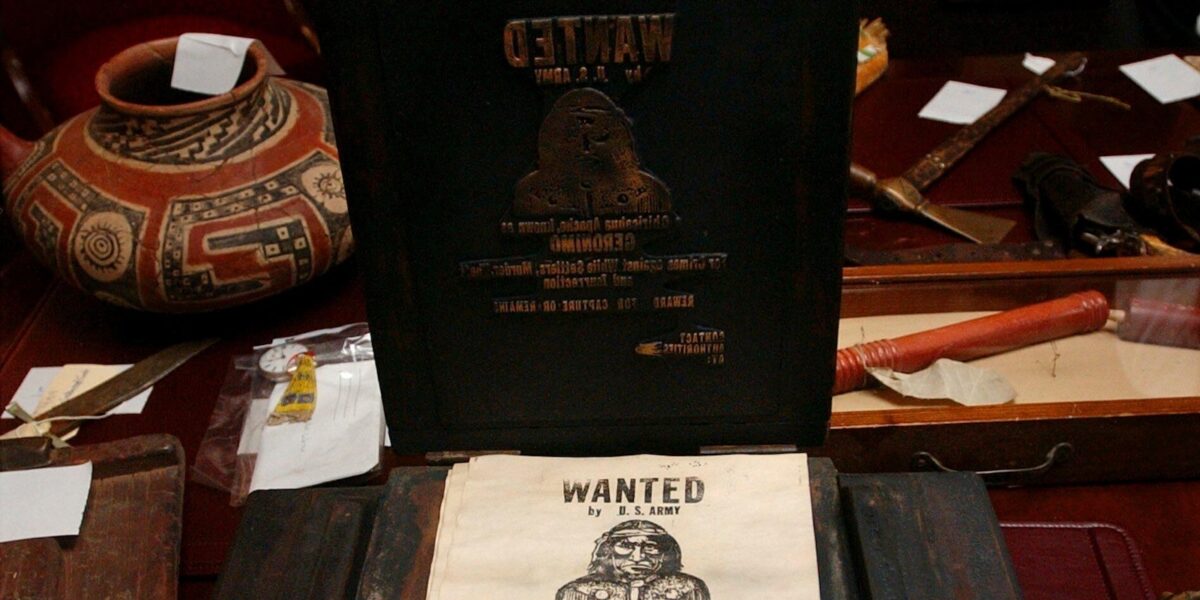WASHINGTON — As Union and Confederate armies clashed in a bloody fourth year of the Civil War, President Abraham Lincoln tasked one man to create the legal code for Arizona, almost 50 years before the territory became a state.
New York judge William Thompson Howell wrote 500 pages that spanned provisions on dueling, accidental homicides by ax and age of consent that would govern the newly formed territory of fewer than 7,000 people. But tucked within the “Howell Code,” just after the section on duels, was an abortion law criminalizing the administering of “any medicinal substances … with the intention to procure the miscarriage of any woman then being with child.”
That was 160 years ago. Last week, that same 1864 provision was resurrected by the Arizona Supreme Court, which upheld the near-total ban on abortion with no exceptions for rape or incest, a decision that quickly rippled across the political landscape of one of the nation’s most important presidential battleground states.
This law’s revival is just the latest instance of long-dormant restrictions influencing current abortion policies after the overturning of Roe v. Wade, which once granted a federal right to abortion.
“This is just one more example of a century-old zombie law coming back to life,” said Jessica Arons, senior policy counsel at the American Civil Liberties Union. “This is what the U.S. Supreme Court set the stage for when Roe fell.”
In the 1860’s, Arizonan settlers faced what was widely seen at the time as a remote and dangerous landscape. Settlers clashed with Apache tribes as they encroached on the region. And miners had just begun to discover the gold and silver that would attract droves of fortune seekers in the next decades.
Arizona’s 1864 code elaborately describes restrictions on duels, ruling any person involved in the fighting of a duel would be imprisoned for one to three years and meting out punishments for “mayhem” for those who “unlawfully cut out or disable the tongue, put out an eye, slit the nose, ear or lip, or disable any limb or member of another.”
Howell’s code includes exceptions for homicides, such as when “a man is at work with an axe, and the head flies off and kills a bystander or where a parent is moderately correcting his child … and happens to occasion death.” The code also appears to set the age of consent at 10 years old, proclaiming, “Every person of the age fourteen years and upwards, who shall have carnal knowledge of any female child under the age of ten years, either with or without her consent, shall be adjudged guilty of the crime of rape.”
Meanwhile, William Claude Jones, who presided over the 1st Arizona Territorial Legislative Assembly in 1864, was described by a biographer as a “pursuer of nubile females” and had throughout his life married a 12-year-old, a 15-year-old and a 14-year-old, according to a 1990 biography in the Journal of Arizona History.
“That’s the period of time that this abortion law is from,” said Prof. Barbara Atwood, law professor at University of Arizona’s law school. “The code reads as if you’re going back to this time of this barbaric, wild west.”
The state’s Civil War-era law is now likely to become one of the strictest abortion bans nationwide, a dynamic that already is shaping the races for president and U.S. Senate. Attorney General Kris Mayes decried the decision and noted that it came from era decades before women even had the right to vote.
She said the court’s ruling “will go down in history as a stain on our state.”
Similar words came from the White House as President Joe Biden said called it a “cruel ban” resurrected from history.
Some Arizona Republicans also criticized the ruling, though in more muted language. Republican state Sen. T.J. Shope called it “disappointing.”
While many states repealed their pre-Roe abortion laws after the 1973 Supreme Court ruling that granted a constitutional right to abortion, about a dozen states, including Arizona, kept theirs on the books. These laws often were referred to as “trigger laws” because the overturning of Roe would put them into effect.
Several legal experts said Arizona’s law is likely the oldest state abortion ban that will now be enforced. But century-old abortion restrictions passed by all-male legislatures during time periods when women couldn’t vote and scientific knowledge of pregnancy and abortion were limited have influenced post-Roe abortion policies in Alabama, Arkansas, Michigan, Mississippi, Oklahoma, Texas, West Virginia and Wisconsin.
The laws tend to be more severe. They often don’t include exceptions for rape and incest, call for the imprisonment of providers and ban the procedure in the first few weeks of pregnancy. Some have since been repealed while others are being challenged in court.
“These century-old laws are really having a tangible impact on women’s lives today,” said Jessie Hill, a law professor at Case Western Reserve University School of Law in Cleveland. “And they’ve really contributed to the post-Dobbs uncertainty across America.” The U.S. Supreme Court’s 2022 ruling in Dobbs v. Jackson Women’s Health Organization overturned Roe.
In Michigan, a 1931 law would have criminalized abortion except when a woman’s life was in danger. But Michigan voters in 2022 overwhelmingly voted to enshrine abortion rights into the state’s constitution and earlier that year a judge ruled the 93-year-old law was unconstitutional. The law was formally repealed by a 2023 statute.
“New Mexico and Michigan realized the threat of these zombie laws and took action,” said Arons of the ACLU. “In Michigan, it was a major driver for pursuing a constitutional amendment enshrining abortion rights.”
An 1849 abortion ban is now at the center of a lawsuit in Wisconsin that is expected to make its way to the state supreme court, which has a new liberal majority. In other states, such as Mississippi, Oklahoma and Texas, newer abortion laws have been layered onto older restrictions still on the books.
Abortion rights advocates also are warning about another 19th century law called the Comstock Act that could have national impacts. It’s been revived by anti-abortion groups seeking to use it to block the mailing of the abortion pill mifepristone nationwide. Medication abortions account for most abortions in the U.S.
Originally passed in 1873, the Comstock Act was intended to prohibit the mailing of contraceptives, “lewd” writings and any “instrument, substance, drug, medicine, or thing” that could be used in an abortion, though its scope has been narrowed by federal courts and Congress.
Mary Ruth Ziegler, a law professor at the University of California, Davis School of Law, said anti-abortion groups are pressuring presidential candidates to wield the law to block most abortions nationwide, even in states where it is currently legal, by barring the mailing of any drugs or equipment required for abortions.
“The Comstock Act means what happened in Arizona is possible for all of us across the country,” Ziegler said.
There also are long-dormant laws in many states related to contraception and same-sex marriage that have not been revived, she added.
“This is just a reminder that laws on the books that may seem irrelevant and antiquated can come back and be enforced,” she said.
___
The Associated Press receives support from several private foundations to enhance its explanatory coverage of elections and democracy. See more about AP’s democracy initiative here. The AP is solely responsible for all content.


